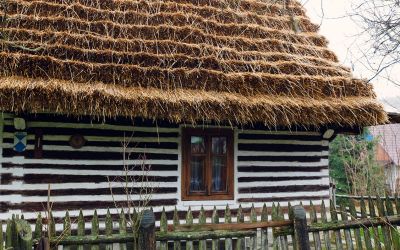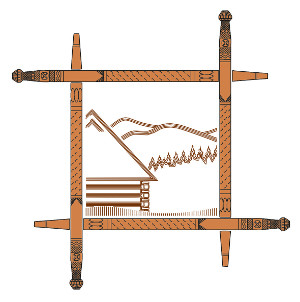
The most numerous and legible traces constituting the heritage of the Wallachian culture can be found in the Low Beskids (e.g. Chyrowa, Zawadka Rymanowska, Olchowiec, Zyndranowa and Osławica) and Bieszczady (e.g. Lutowiska, Rabe, Michniowiec, Caryńskie, Berehy Górne). In the past, the Wallachian culture developed also in other Bieszczady towns, now more known from tourism, i.e. Ustrzyki Dolne, Wetlina, Cisna.
The history of the Wallachian colonization in the Polish part of the Carpathian Mountains took place in the period from the 14th to the 17th century. The Wallachians wandering around the Carpathian arch lost their mother tongue and became followers of the Christian religion of the Eastern rite. They introduced breeding and cheese-making traditions in the present-day territory of Poland, which resulted in the Wallachian law introduced at that time. They taught the local population how to use the forest, forest glades and mountains for grazing sheep.
During several centuries of migration, the Wallachian element scattered over a vast area of the entire Carpathian Mountains and mixed with the local population coming from the north through river valleys. Their present descendants are Russian highlanders, including Boykos and Lemkos.
Archaeological research confirms the hypothesis of the Wallachian demographic background of the Boyko and Lemkivshchyna regions. The intensive colonization based on the Wallachian law developed in the 15th and 16th centuries leading to the occupation of the higher parts of the Carpathian Mountains by man. The Wallachians, who had their own language and culture, did not violate the current state of possession of the Polish agricultural population, but they expanded the existing human Ecumene with mountains and foothills. In this way, an ethnographic group began to form in the Beskids, which from the mid-19th century was called Lemkivshchyna. The Boyko region was most probably shaped in a very similar way, although the external environment was different.
The ancestors of Lemkos who arrived in the Beskids settled mainly in river valleys, which directly influenced the character of the emerging settlement. At the end of the 17th century a significant growth of families and villages began. The population, settled along the Beskid valleys, formed during their common existence, the elements distinguishing them from other communities, i.e. the language, religion, costumes, music, construction, etc. The population of the Beskid valleys was able to develop their own way of life. The new culture developed on the basis of the Wallachian-Russian settlement. Throughout the 19th century a systematic demographic development of Lemkivshchyna continued.
The oldest information concerning the character of Lemko villages comes from the 14th century and later periods. Lemko villages were located mainly on the "raw root" in forests, which had to be cleared by settlers for cultivation purposes. The villages stretched along rivers or streams. Depending on the length of the stream, one or several villages connected by a river stream could be located in the valley. The consequence of the village chain system was a land division. It was specific to Lemko villages and consisted in the fact that each settler received a strip of land running across the valley from the ridge to the ridge.
Boyko settlements were established in river and stream valleys. The villages had the character of a chain building, where the cottages stretched along a long line even for a few kilometers.














